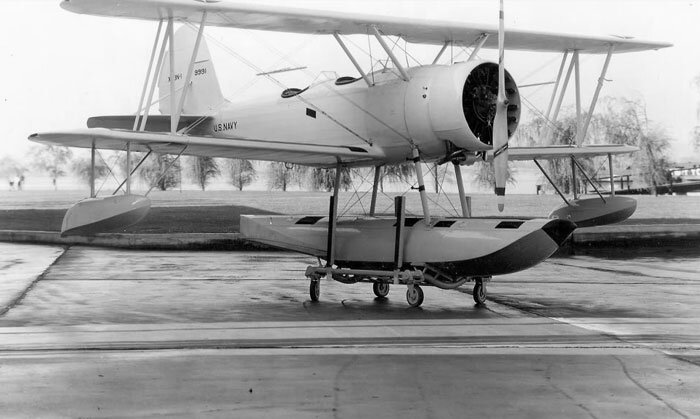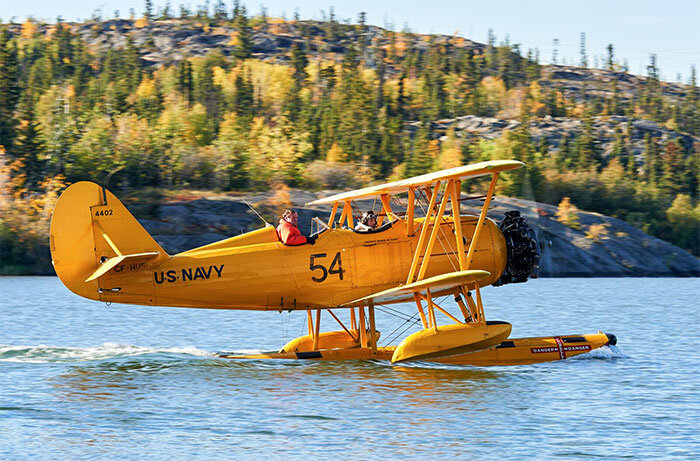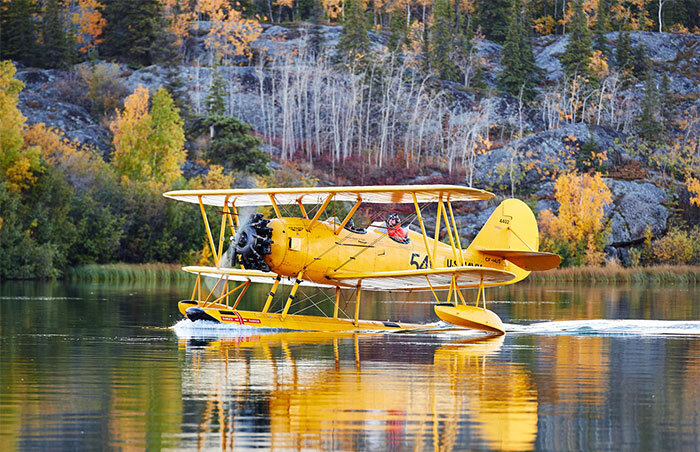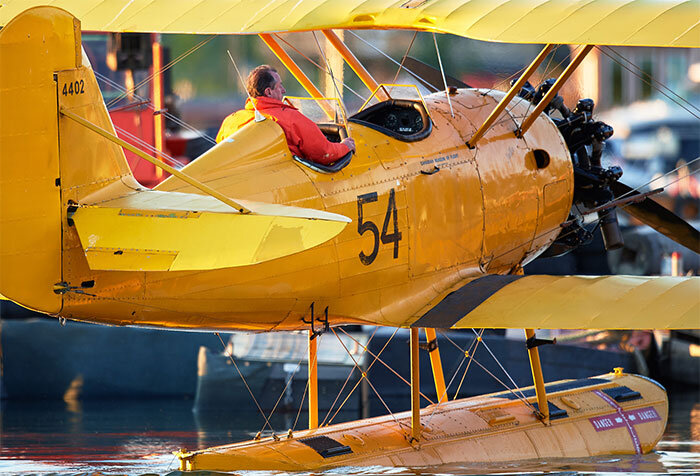NO LOGICAL REASON
During the long and endless months of the Second World War, Canadian skies from Cape Breton, Nova Scotia to Vancouver Island resounded with the bellow and drone of aircraft engines and, for those who lived in the flatter parts of the land, there was the daily sight of yellow trainers of all types. Farmers everywhere gazed skyward, hand held to shade the sun to see the frisky flight of a Tiger Moth challenging a novice pilot on a hot day; oily yellow Harvards with their trans-sonic snarl looping and winging in cerulean heights; schools of Cessna Cranes and Avro Ansons rising and falling on invisible currents and eddies. The same crowded skies extended across the United States too—from the Atlantic to the Pacific. There were literally tens of thousands of these training aircraft, and hundreds of thousands of students and instructors—learning the air war-fighting skills they would soon use to crush two evil empires on opposite sides of the planet—piloting, navigating, engineering, gunnery, radio operation and bomb aiming. This tidal wave of flying training crashed against North American society and geography and spilled into every part of the continent. And then it was gone even quicker than it arrived.
During the expedition of flying training, thousands of these trainers were destroyed or damaged beyond repair, but at war's end, there were still many thousands languishing in storage fields everywhere. Except those more modern aircraft that would be kept to help train immediate post-war aircrew, the vast majority of the training aircraft of the war years were disposed of through auction with nearly all of those being sold to salvage companies, broken up and rendered into aluminum ingots. Some however were bought by private citizens, crop sprayers and flying clubs and would become the foundation for the warbird “industry” we know and love today.
There are hundreds of North American Harvards (T-6 Texan, SNJ) still flying and scores of Tiger Moths, Stearmans and Cornells still rattling around the skies of North America, Europe, Australia and South Africa. While these aircraft are well known to aviation enthusiasts, air show geeks and military historians, one other, the Naval Aircraft Factory N3N “Canary”, built in Philadelphia, Pennsylvania is a rarer sight these days with only 14 in museums and a relatively small number still in flying condition out of the nearly 1,000 that were made. Even rarer are N3Ns still flying on floats. Designed as a naval aviation primary trainer, the N3N was for the most part operated on wheels, but a good number of them were built as float-equipped flying trainers for those pilots selected for amphibious and flying boat operations. Today there are many still in flying condition.
The single prototype XN3N-1 (BuAero No. 9991) sits on a trolley that enables dry-land taxying. The first of a long line, 9991 was the only one of nearly 1,000 N3Ns to be powered by nine-cylinder Wright J-5 Whirlwind motor, putting out 220 horsepower. The prototype first flew in the summer of 1935, followed by a production run of 179 N3N-1s. By the end of the first production run, the powerplant was changed for a 235 hp Wright Whirlwind R760-2 radial. Photo: Airwar.ru
In 1940, a student pilot and instructor thunder across the water-soaked grass at Naval Reserve Aviation Base Oakland, California in one of the 179 production N3N-1 trainers (BuAero No. 0692). The N3N-1 was designed to be used on wheels or the big centerline float, and it was even adapted for skis in the northern states. In my mind, the aircraft looked much more attractive on the floats. Photo: Pinterest
In 1940, a student and instructor take off from the waters of the Detroit River at Naval Air Station Grosse Ile, Michigan. The engine cowling in intact on this photo, but mechanics preferred to remove them for easy maintenance since they did not offer much improvement in drag reduction. At Grosse Ile, N3Ns were used in both the float or wheel configuration. The float version was used to train Navy pilots for flying boat and ship-borne reconnaissance aircraft operation. Photo: NASGI.net
Related Stories
Click on image
A photo of a float-equipped N3N-3 on a trolley at Naval Air Station Jacksonville, Florida in January 1942. Typically, the N3Ns were painted yellow with a silver or yellow centre-line float. Note that the factory-supplied engine cowling has been removed.
A US Naval Aircraft Factory N3N-1 (BuNo 1759) flies at altitude over Pennsylvania during the war years. The big tail, massive float and outriggers were the defining characteristics of this solid performer. Photo: Wikipedia
An instructor and student taxi their N3N Photo on a trolley to the launch ramp at the Annapolis Naval Academy with ground crew “walking the wings”. The website for N3N Owners states: “Most N3N-3 aircraft were declared surplus during and immediately after the war. But about 100 airframes were kept by the Navy. The N3N was no longer used for primary training but stayed in service to provide orientation rides for midshipmen at the Naval Academy in the seaplane configuration. They continued in use until 1959, with the final airframes stricken from military inventory in 1961. Operation until 1959 makes the N3N-3 the longest serving (and last serving) biplane in the U.S. military”. Photo: N3Nowners.org
A mobile crane lifts an N3N-3 (BuNo 2920) belonging to Naval Training Squadron VN-7D8 from its trolley into the Gulf of Mexico at Naval Air Station Pensacola, Florida in 1944. You can just make out the white trolley just to the left of the crane's track. The number 2 is painted on the trolley, leading me to think that each N3N-3 had its own specific trolley as the aircraft is also No. 2. Photo: Wikipedia
While the N3N was not built in the numbers that the Stearman attained (997 vs 10,621), but at the beginning of the war it was a successful and common training aircraft at bases on both coasts and in the Gulf Of Mexico and the Great Lakes. Here, in a publicity shot, the pilots of a flock of six N3Ns warm their engines prior to taxiing to the water ramp on their trolleys.
Many surplus N3Ns were bought up by crop dusters after the war. Airplane geeks watching the iconic scene from North by Northwest where Cary Grant is chased by a crop duster think that it is a Stearman that hunts him down, but it is in fact a Naval Aircraft Factory N3N. They can be forgiven though, for in the scene where the crop duster hits the side of a fuel truck, it is a flightless Stearman that explodes and burns. Photos: MGM
The N3N was used strictly by the United States Navy and Marines, and did not fly with any Canadian military service during the Second World War, so are a rarer still sight in Canadian skies. Only one is in fact flying with a Canadian registration (CF-HUS) and you won't see this beautiful aircraft very often. “HUS” is the personal winged joy-machine of Buffalo Joe McBryan, the legendary head of Buffalo Airways Ltd, a Yellowknife, Northwest Territories aviation enterprise known worldwide for their continued operation of some classic workhorses of bush flying in Canada—Curtiss C-46 Commandos, Douglas DC-3 Dakotas and Lockheed Electras to name a few. Joe McBryan's and his son Mikey McBryan are serious operators of scheduled airline service, charter and freight businesses, aerial spraying and forest fire suppression, but their worldwide fame grew exponentially with their hugely successful History Channel TV series, Ice Pilots, NWT.
If you are devotee of Ice Pilots (people generally drop the NWT), you come to a few conclusions about Northern Canadian air operations—the weather can be brutal and unforgiving (-40C, slashing winds, blizzards) and harsh on older aircraft systems; the summer flying season is painfully short, and Buffalo Joe is about as good a pilot as can be found in the North. He continues to fly cargo flights in Buffalo's DC-3s, check new captains and first officers in the DC-3 and C-46, and fly other types while running the family business. In most episodes of Ice Pilots, Joe is portrayed as gruff and surly, not the kind of guy you'd want to run afoul of. In truth, he is simply a rough-hewn man of few words and high standards, with no time for laziness, posers or repeated mistakes. Given the never-ending grind of work and extreme conditions, one would think he would have enough after more than 50 years of continuous and exhausting northern flying. But flying is part of Joe's DNA, as natural for him as walking is for most people. While Joe would never admit to such new-age claptrap, it seems that Joe has a personal and intimate relationship with each aircraft that he flies—born of a knowledge of its systems, an understanding of its limits, countless hours with his hands on the yoke and a trust in the design of aircraft and engines that have shouldered the weight of bush flying since the end of the Second World War.
Flying the N3N was the tonic Joe needed to get away from it all and get back to basics— stick, rudder, clear air, wilderness, and a one-on-one relationship with a flying machine.
“The northern lights have seen queer sights”. Poet Robert Service's The Cremation of Sam McGee comes to mind as Buffalo Joe McBryan's bright yellow N3N Canary sits buttoned down for the night under a restless aurora borealis. The idea of an open cockpit biplane in a sub-arctic community does seem a little out of the ordinary. Too bad the N3N needs water to land and take off, as an open cockpit view of the Northern Lights at night would be a wonderful experience. Photo: Stephen Fochuk
Joe McBryan makes a flypast of photographer Fochuk displaying the aircraft's very best angle—with float and outriggers nicely silhouetted. Photo: Stephen Fochuk
McBryan, not prone to gushing about anything, tells photographer Stephen Fochuk: “It's very neat to fly, very nice to fly.... I just fly it for pleasure around town. It's a very well-built airplane, a very strong airplane.” Commenting on the very rare single float and outrigger configuration, Joe explains: “It's built like that because after this aircraft, they (US Navy trainee pilots) would go on to the Canso—the PBY—which is built the same, a single hull with outrigger floats. Or the Grumman line of flying boat airplanes”. Speaking of the aircraft's water handling, Joe explains: “It's very stable, very well designed with no inherent danger at all.” In the air, Joe says, “you can feel everything in it, it doesn't have any bad habits. There's really no instrumentation to fly by. You fly it strictly by feel. It's real flying. It's flying at its best.” When pressed by Fochuk where the N3N stands in terms of his favourite aircraft to fly, Joe who probably has loved every aircraft he has ever flown is quick to state: “It's all on it own. There's no real favourite. They're all good for what they are flown for. Whatever one you are in at the time is your favourite. That's why you're in it. If it wasn't a favourite, you wouldn't be in it. I've never been able to pick a favourite. I've liked them all.”
Truthfully, Joe's favourite (whether he says so or not) is the Douglas DC-3/C-47 which he has been flying now for almost 50 years. “ˆIf I could do another 50 years on it, I would be quite happy.” says Joe. These words are for an aircraft that he has been flying uninterrupted since 1969, and he thinks very well of a machine that has never let him down.
In June 2017, prior to a first flight of the year in his N3N, Buffalo Joe McBryan (left) and Buffalo Airways engineer Chuck Adams (back to camera) check the Wright Whirlwind engine with the aircraft still on its dolly at the airport. Photo: Stephen Fochuk
The Yellowknife sun shines warmly on the big doors of the Buffalo Airways hangar as Joe McBryan gets set to fly his N3N after some winter work. Photo: Stephen Fochuk
Joe intently reads the owner's manual for his new radio before trailering his N3N to the launch ramp in Yellowknife's Back Bay. Photo: Stephen Fochuk
But the new girl in town, the N3N Canary with the bright yellow paint, is who he goes dancing with these days. “I'm really glad I got it. I'm really glad I had the opportunity to bring it from British Columbia back up here.” Joe has continued the practice of the previous owners and taken passengers with him on most flights, for no charge. Just to share this piece of history, his Northwest territorial landscape and his joy of flying. When asked if he has had any interesting co-pilots, Joe simply states “A lot of people I take up, I don't know who they are.” If the Snowbirds or a CF-18 pilot wants I ride, Joe says “I'll take them just to show them the difference. The people who usually come have sparked an interest in another life and come to see it. The previous owners spent their weekends giving people rides around Pender Harbour in BC.” As of last year, Joe had taken 146 people. “I'd do a lot more if I had more time but I still have to fly my sched. There are lots of nice nights I'd like to fly, but I'm not here to fly it”
The previous owners, Bill and Wilma Thompson of Pender Bay, devoted much of their lives to Canada's aviation heritage and sharing their beloved N3N. Thompson acquired the N3N in 1979 and spent 12 years restoring it. When Bill, a west coast tugboat master, passed away in February 2015, Wilma knew she would have to sell their beloved airplane. She also knew that it would have to go to someone who would cherish it as much as she and Bill did and have the means to keep it in the superb shape that Bill had worked so hard to maintain. When Joe McBryan expressed interest, it was a perfect match and Joe understood his responsibilities and obligation to share the aircraft with the world. Today, the N3N flies in Yellowknife and on every flight, she carries a small amount of Thompson's ashes so that he can continue to fly her into the future.
The N3N was flown by ferry pilot Russ Orr and aircraft mechanic Dave Mulholland from coastal British Columbia, through the Rocky Mountains to Yellowknife. Both Orr and Mulholland had long histories with N3N C-FHUS. On the way, the Wright Whirlwind “blew a jug” and Orr made a forced landing on to Jarvis Lake, Alberta, west of Calgary. Here she was repaired, flown out by a pilot experienced in small lake take-offs, then over-wintered at nearby Buck Lake before continuing on her journey into Yellowknife. For a great video of her trip and attempts to fly her out of tiny Jarvis Lake, click here.
Since C-FHUS has arrived in Yellowknife, Joe McBryan has steadfastly continued the legacy of Bill and Wilma Thompson, inviting interested people to join him for a tour of the city and the spectacular wilderness around Great Slave Lake, at 27,000 square kilometers, the tenth largest lake on the planet and a perfect place for an historic float plane to live out its life. When Joe speaks, you hear the respect in his voice for the Thompsons and his commitment to their continuing story and connection to the old gal.
In a recent interview with the Canadian Broadcasting Corporation, Joe was asked why he bought the airplane. he said "I have no logical reason to own it or want it.”
Perhaps this is the best of reasons, for love, passion and joy are not logical emotions. It's the one reason Bill Thompson would have understood.
by Dave O'Malley
Joe McBryan (in front student's seat) goes flying in his N3N for the first time in the summer of 2016. Joe would spend a short time learning the idiosyncrasies of his new aircraft before venturing solo. Photo: Stephen Fochuk
Another great shot of Joe taxiing on Back Bay in colder weather. Photo: Stephen Fochuk
After just a couple of hours of dual check ride time, McBryan, one of the planet's most gifted pilots, took his N3N into the beautiful skies of the Northwest Territory. Here, following his first flight, Joe lands solo for the first time on the surface of Yellowknife's Back Bay. Since then, Joe has flown hundreds of times, almost always sharing the experience with another lucky pilot or passenger. Photo: Stephen Fochuk
Joe McBryan looks quite satisfied after one of his first check rides in his new N3N in the summer of 2016. Photo: Stephen Fochuk
The best times for open-cockpit flying in a biplane with light wing-loading are early morning and late evening when the air is smooth, the light warm and the shadows long. At the end of the day, Joe ties up at the Buffalo floatplane dock on Back Bay. Photo: Stephen Fochuk
Joe taxies on Back Bay with Royal Canadian Air Force test pilot Major Ian MacNeil (Callsign Tuna) in the front seat, excited for a little stick time in an open cockpit aircraft—different from his day job as a test pilot with the RCAF's Aerospace Engineering and Test Establishment (AETE). Photo: Stephen Fochuk
Buffalo Joe jumps down from his N3N as Major Ian Tuna MacNeil gets set to follow him after their flight. MacNeil and fellow AETE member, flight test engineer Mike Dion, were in town for a celebratory flypast on the town site in honour of the 75th Anniversary of the Battle of Britain. Coincidentally, the only Battle of Britain-era military aircraft in town that day was Joe's bright yellow N3N. Photo: Stephen Fochuk
After his flight with Joe McBryan (right), Ian MacNeil (second from left) poses with flight test engineer Mike Dion and Buffalo Airways General Manager and TV personality Mikey McBryan. Photo: Stephen Fochuk
Joe McBryan, who is depicted on the Ice Pilots TV series as a crusty, demanding man of few words, but in real life, he demonstrates his generosity by sharing his passenger seat with people from all over the world, taking them for a flight they won't soon forget. Photo: Stephen Fochuk
The joys of open-cockpit flying over the beautiful northern landscape are evident in this passenger's smile and handshake. Photo: Stephen Fochuk
Joe swings into his take-off line in Yellowknife's Back Bay. Photo: Stephen Fochuk
Joe climbs off the surface of Back Bay, heading south. Behind him his wake traces his curving taxi path into the wind and his short take-off run. Photo: Stephen Fochuk
Joe, in his Second World War vintage leathers, climbs out to the south. Photo: Stephen Fochuk
A magnificent view of a solitary Joe McBryan experiencing the sublime joy of open cockpit flying. Photo: Stephen Fochuk
On a sunny autumn afternoon, Joe glides back to his base on the calm waters of Yellowknife's Back Bay. Photo: Stephen Fochuk
As the sun sets over Back Bay this summer, Joe brings HUS home for the night. It's evenings like this that make Joe's decision to purchase an open cockpit float plane in the Arctic a beautiful choice. Photo: Stephen Fochuk
Joe McBryan sitting proud in his N3N as he taxies back home on a quiet evening. Photos: Stephen Fochuk
The family welcomes him home. Mikey McBryan (left) and his brother Rod get ready to catch and guide Joe to the Buffalo floatplane dock on Back Bay. Handling a heavy fabric-covered vintage aircraft with 12-foot long poles requires some experience to prevent puncturing the skin. Photo: Stephen Fochuk
Legendary Joe McBryan humours his son Mikey by donning some authentic gear, knowing he'll soon be Tweeted and Instagrammed. Photo: Stephen Fochuk
Joe in his leather flying jacket looks a tad uncomfortable “posing” as a pilot. It seems like he'd rather don his every day gear and go flying without having to look the part. Photo: Stephen Fochuk
As the summer sun sets on Back Bay, Joe and his crew manhandle the more than 3,000 lb N3N to a safe tie-down in front of Joe's house on Back Bay. Photo: Stephen Fochuk
Joe returns to the dock with a passenger who was even older than his N3N— an adventurous woman celebrating her 85th birthday. Joe was worried that she would be too infirm to get in and out of the cockpit, but she proved spryer than Joe. He told her that if she comes back next year she could do some wing-walking. Photo: Stephen Fochuk
Taxiing the big N3N requires a lot of side-to side-head movement with the pilot sitting up out of his seat. Here Joe taxies around to the Yellowknife airport where he will meet a truck towing the N3N's trolley. It's time to take it out of the water. Photo: Stephen Fochuk
Joe McBryan shuts down the Wright Whirlwind and glides toward the ramp at Long Lake near the Yellowknife Airport. Photo: Stephen Fochuk
A Buffalo Airways crew has backed a custom-built trolley into the water at the base of the ramp to take the N3N out of the water for maintenance and winter storage at Buffalo's Yellowknife airport facility. Photo: Stephen Fochuk















































